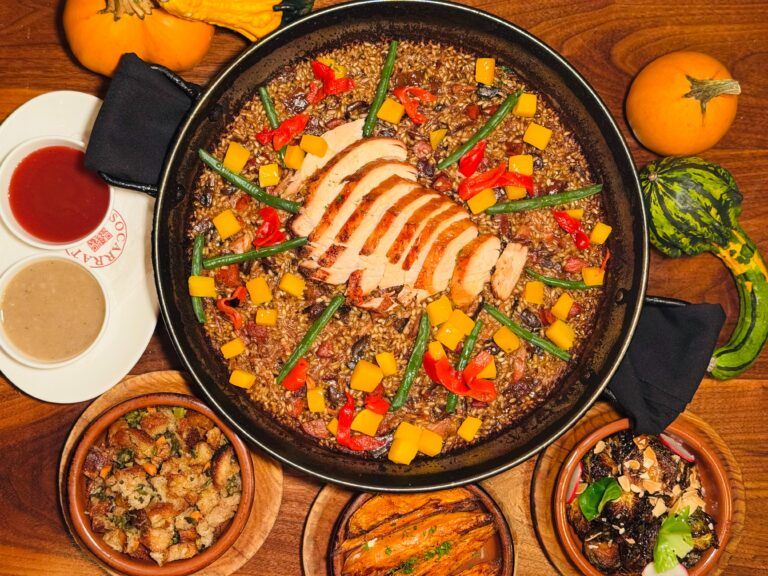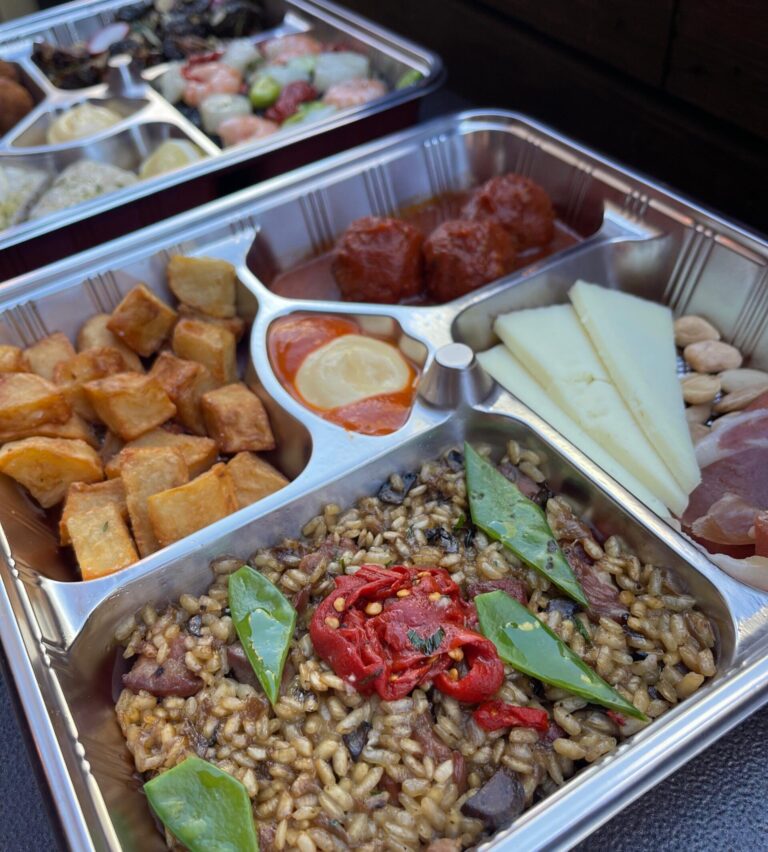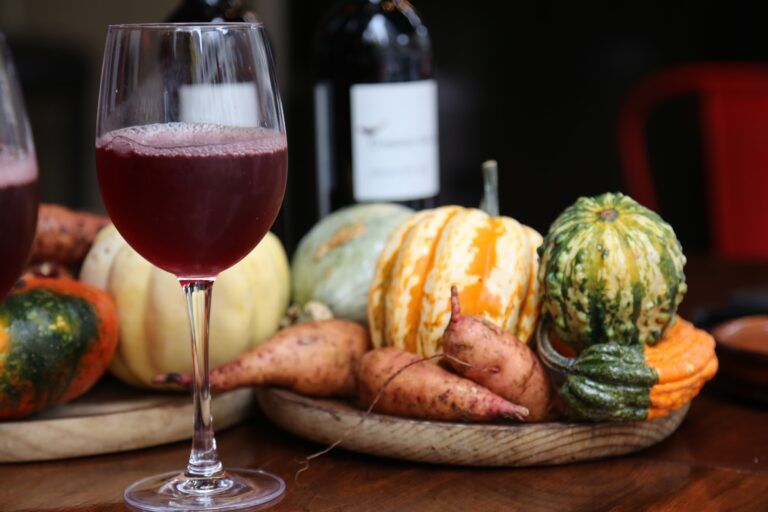What are tapas?
To tapear (enjoy tapas) is to picar (pick at) small plates of food that are accompanied by alcohol. The Royal Academy of Spain’s definition of a tapa is: “a small portion of any food served to accompany a drink,” but the literal Spanish to English translation means “cover” or “coaster.”
Tapas are not their own meal (though we won’t blame you for ordering 10 different tapas to make a meal – who can resist?!) – they’re similar to American appetizers, but with more cultural panache. Tapas are so much more than just a type of food – it’s a culture that brings friends, family, and new acquaintances together!
In fact, there’s no such thing as a tapas restaurant; only a tapas bar (or a Spanish restaurant that serves tapas). Traditional tapas bars are usually very crowded, and food/drinks are often consumed standing.
Many Spaniards enjoy a tapeo – essentially a tapa-bar-hopping spree; a giant, moving feast. Many bars serve the first tapa free with a drink, so a group will order 1 drink each, settle the tab, and hop on over to the next tapa bar.
The History of Tapas
Depending on who you ask, you may get a different answer, but the most common theories regarding the origin of Tapas are:
- The traveling king legend: a king (which king, exactly, is always up for debate among King Fernando VII, King Fernando XVII, and King Alfonso XIII) who was traveling with his court had come a long way to a restaurant, which served the king a glass of wine. The restaurant had placed a slice of cheese on top of the wine glass to protect it from bugs and dust, because wine barrels and taverns were attractive places for wine fleas and bugs to congregate. After a long day of traveling, the king was hungry, so he ate the cheese that was serving as a tapa (cover) – as did the rest of his court. He knew the cheese was simply to protect the wine, but he enjoyed it – so from then on, he requested a tapa with his wine wherever he went.
- The recovering king legend: King Alfonso X (“El Sabio”) was recovering from an illness and needed to have small snacks and small glasses of wine between meals (what a recovery!), and even once back to health, enjoyed them – so he decreed that all inns and restaurants throughout Castilla must serve tapas with their vino. His reasoning was two-fold; personal enjoyment, but also the discouragement of unruliness that would occur when people drank too much wine without consuming any food.
- The origin without royalty: some say that tapas originated in the countryside, where the working class would consume small snacks with wine for stamina during the long working hours between meals.
What’s in a tapa?
Really, anything – the only requirement is that it’s served on a small plate (or in small sizes) and accompanied by alcohol.
They can be cold: olives, nuts, cheeses, assorted sliced meats, and slads
Or hot: stews, potatoes, skewers, octopus, grilled/cooked meats, fish, and more.
What are traditional Spanish tapas?
Tapas will vary by region, but some of the authentic, traditional tapas you’ll find on most tapas menus are:
- Ensaladilla: a cold salad (usually potato salad with mayo and tuna)
- Tortilla: potato omelet, usually served in a small wedge
- Revueltos: scrambled eggs with assorted add-ins
- Gazpacho: cold soup
- Ablondigas: meatballs
- Croquetas: various types of fried and bread-crumbed balls that can contain anything from ground meat to veggies and fish
- Montaditos: small bread buns with fillings
- Gambas a la plancha: unpeeled shrimp salted and grilled – warning: the heads are usually kept on.
- Zamburinas: scallops cooked in tomato sauce and olive oil
- Chorizo: sausage
- Gambas al ajillo: fresh prawns in garlic olive oil
- Chipirones: small fried squid (sometimes grilled as a healthier option)
- Calamares: fried squid rings
- Patatas braves: fried potatoes served with either a spicy ketchup-style sauce or aioli (or both)
- Pimientos: small green peppers fried and salted
Are there tapas for dietary restrictions?
You’ll see a lot of tapas contain meat, shellfish, or cheese – often there will be vegetable options (outside of just olives and nuts), but if you have a strict diet, make sure to ask your server to make sure that vegetable tapas like mushrooms and peppers are sprinkled with bits of bacon or combined with sausage for flavor.
Tapas bars often serve the purpose of a sports bar or living room – a place to watch a game or match with friends while enjoying drinks and small bites.
Whether enjoying tapas in a crowded tavern or an elegant restaurant, they are the perfect pairing to a glass of wine, pint of beer, or an expertly mixed cocktail. What’s your drink and tapa of choice? Vamos a tapear!



